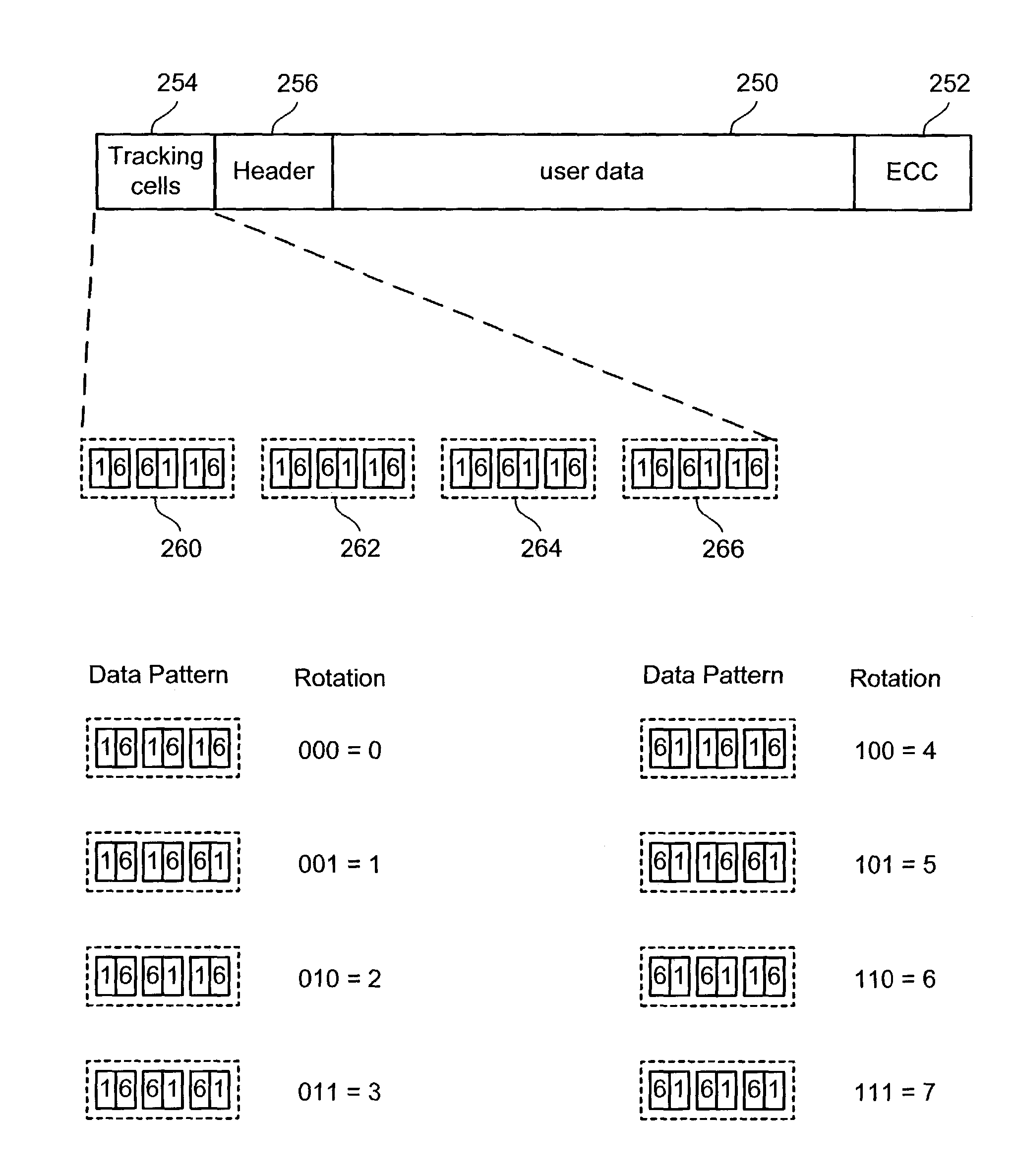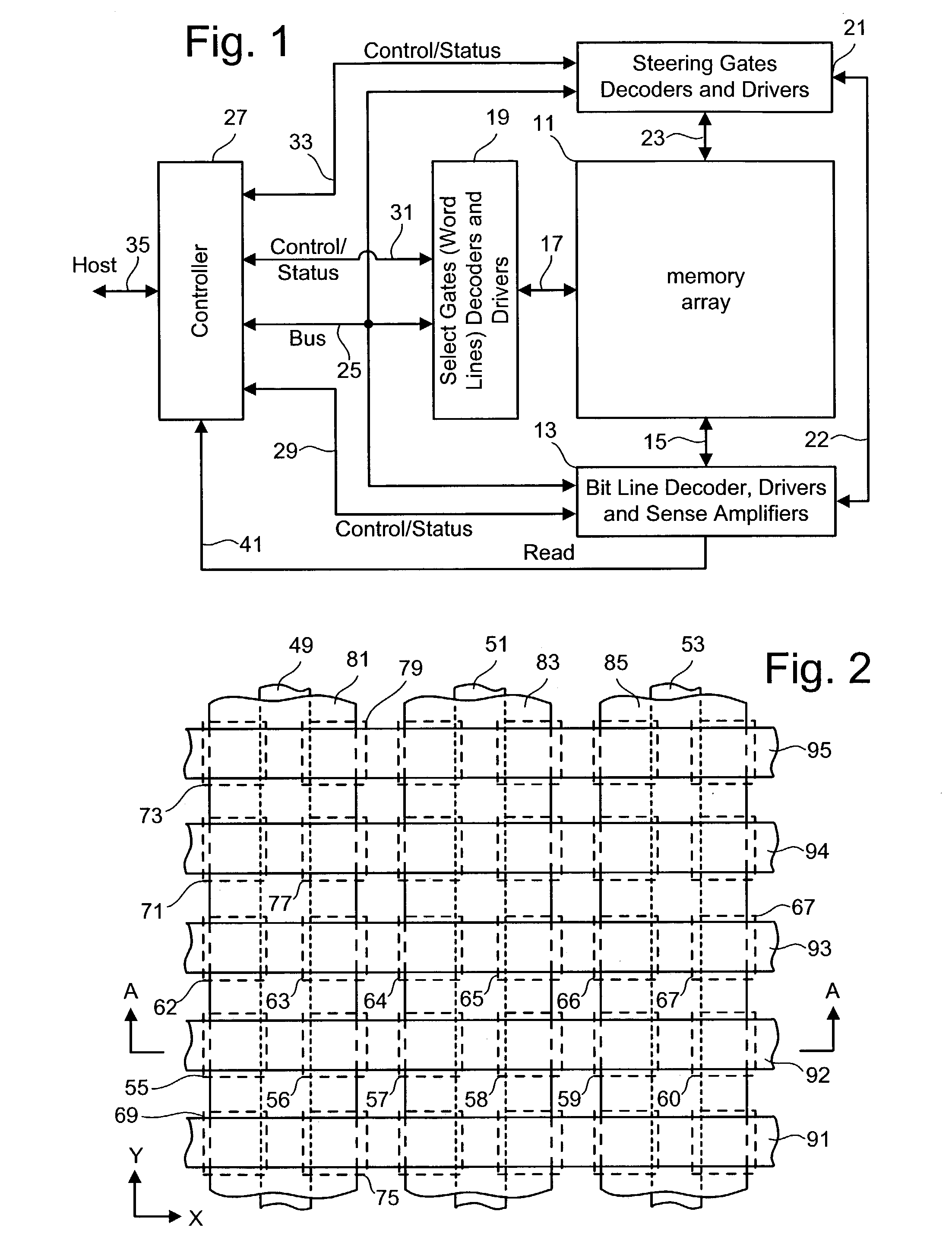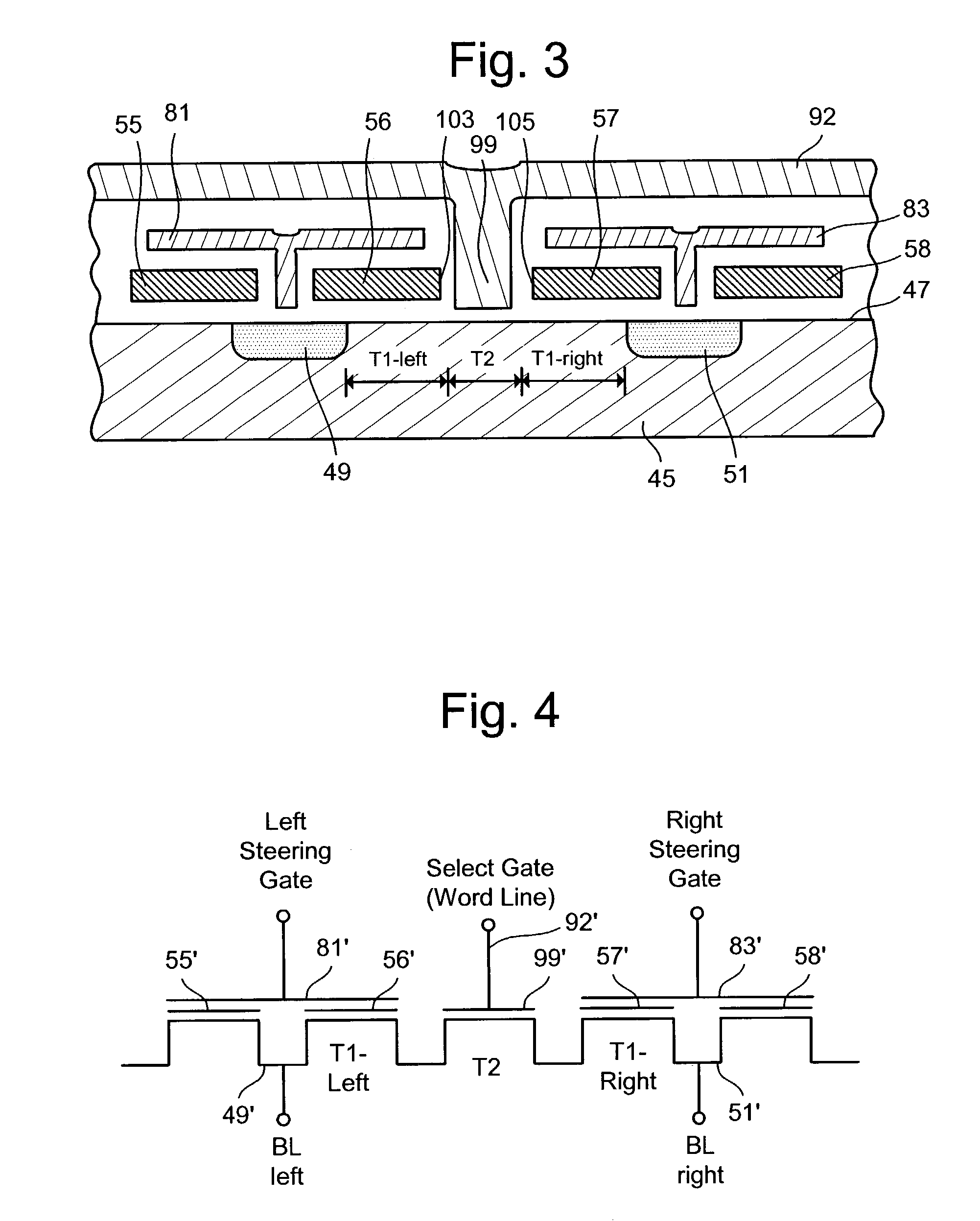Tracking cells for a memory system
a memory system and tracking cell technology, applied in the field of reading memory devices, can solve the problems of limiting the endurance of prior flash memory devices, affecting the performance of flash memory devices, and prone to damag
- Summary
- Abstract
- Description
- Claims
- Application Information
AI Technical Summary
Benefits of technology
Problems solved by technology
Method used
Image
Examples
Embodiment Construction
I. Memory System
[0033]An example memory system incorporating the various aspects of the present invention is generally illustrated in the block diagram of FIG. 1. Architectures other than that of FIG. 1 can also be used with the present invention. A large number of individually addressable memory cells 11 are arranged in an array of rows and columns. Bit lines, which extend along columns of array 11, are electrically connected with bit line decoder, driver and sense amplifiers circuit 13 through lines 15. Word lines, which extend along rows of array 11, are electrically connected through lines 17 to word line decoders and drivers circuit 19. Steering gates, which extend along columns of memory cells in array 11, are electrically connected to steering gate decoders and drivers circuit 21 through lines 23. Each of the circuits 13, 19 and 21 receives addresses from controller 27 via bus 25. The decoder and driving circuits 13,19 and 21 are also connected to controller 27 over respectiv...
PUM
 Login to View More
Login to View More Abstract
Description
Claims
Application Information
 Login to View More
Login to View More - R&D
- Intellectual Property
- Life Sciences
- Materials
- Tech Scout
- Unparalleled Data Quality
- Higher Quality Content
- 60% Fewer Hallucinations
Browse by: Latest US Patents, China's latest patents, Technical Efficacy Thesaurus, Application Domain, Technology Topic, Popular Technical Reports.
© 2025 PatSnap. All rights reserved.Legal|Privacy policy|Modern Slavery Act Transparency Statement|Sitemap|About US| Contact US: help@patsnap.com



